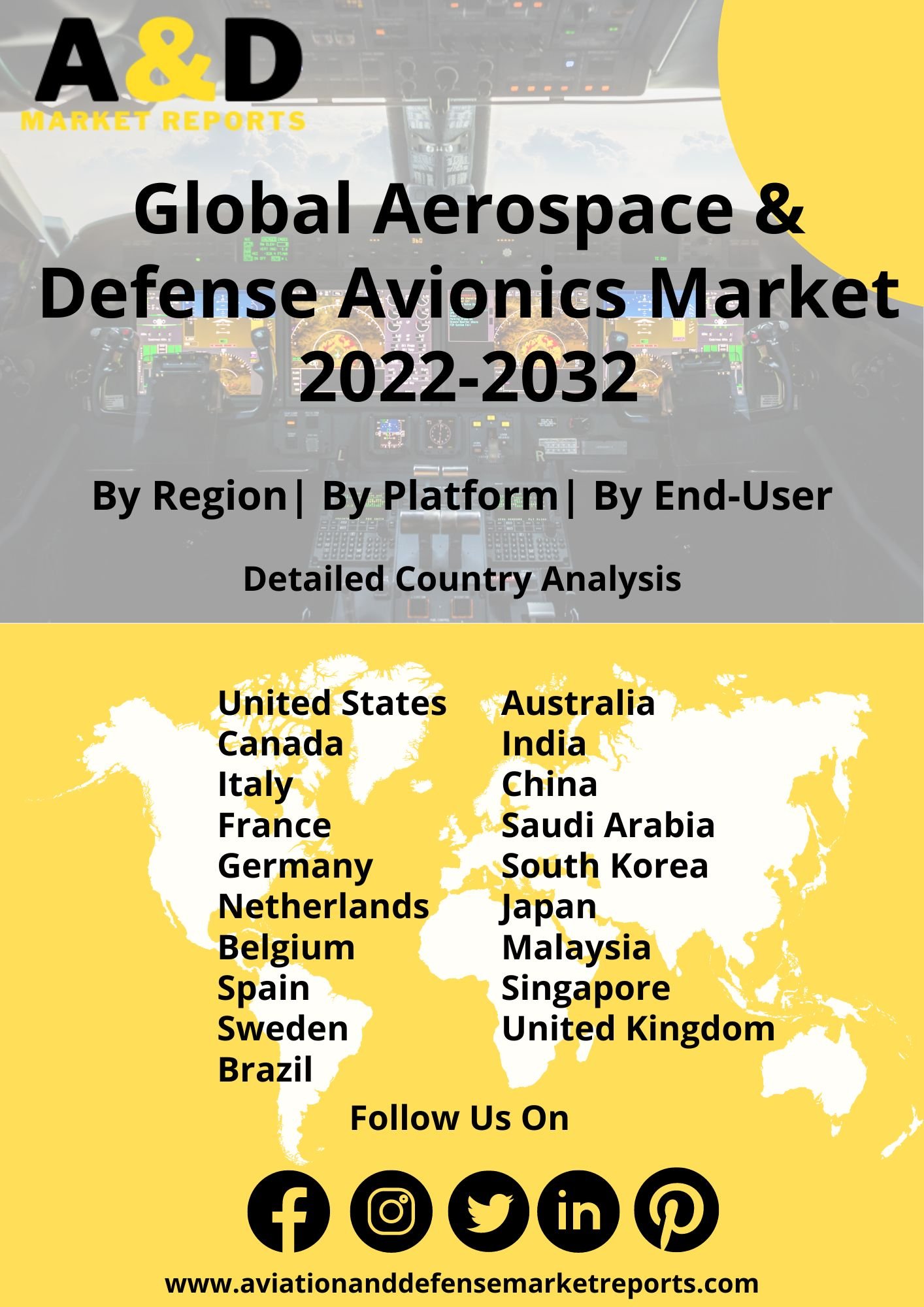Description
Aerospace Defense Avionics Market
Frequently Asked Questions of A&D Avionics Market
Avionics as the name suggests are typically electrical systems used on an aircraft. Aerospace Defense avionics market forecast is a combat-ready, tactical branch of avionics. Communications, navigation, the management and display of various systems, and the hundreds of devices installed on airplanes to carry out specific tasks are all included in the category of avionic systems. These can range in complexity from the tactical system for an airborne early warning platform to something as straightforward as a searchlight for a police aircraft.
The term “military avionics” refers to a variety of embedded electronic support, attack, and protection capabilities, as well as flight control, navigation, communications, activity monitors, electro-optic and infrared threat sensors, weapons trackers, secure tactical communications, countermeasures dispensers, and other capabilities. Therefore, the systems integrated into military technology have both hard-kill and soft-kill measures embedded into the technology.
Due to their military orientation, these avionics are also constructed more robustly. They are either housed in containers that are more resistant to enemy attack, or they are made to order using special materials that are inherently more able to withstand damage in the harsh environments in which they must operate. These extra precautions are all in place to support the mission and guarantee the security of the military men who depend on them.
Major factors driving Aerospace Defense Avionics Market Growth
The demand for sophisticated aerospace defense avionics market size for combat applications is increasing because of the rise in regional conflicts. Moreover, several countries have been investing heavily in upgrading their fleet through modernization as well as acquisition programs. Therefore, this could lead to a subsequent increase in investment. One of the prominently known military struggles for power is between the US and China.
By updating existing aircraft with modern aerospace avionics systems to fulfill safety and integrity standards, increased investments in the defense and military sectors are also assisting market expansion. An increased military budget is hereby poised to increase the procurement of aircraft and related technology. Military aircraft are being employed more frequently for supplementary tasks such as troop transportation, humanitarian aid, and natural disaster rescue, which is boosting the market growth. Because of this, all of the aforementioned factors have recently had a significant impact on market growth and are expected to do so going forward.
Trends influencing the Aerospace Defense Avionics Market Size
Increasing the life associated with an aircraft is one of the key market challenges faced today. The increased lifespan of an aircraft translates to an increase in fleet size and subsequent usage of the same. One of the most essential elements of extending the lifespan of a whole aircraft system is increasing the capacity of an avionics system. As vital components stop being produced or become outdated, many former providers of military-grade components go out of business. Additionally, traditional aircraft avionics systems that were created to meet historical needs might not have the full capability to carry out new missions, respond to new threats, or function effectively in new information-intensive battlefield settings. As the fleet of aircraft matures, managing and maintaining avionics equipment will get harder.
Aerospace Defense Avionics Market Forecast & Dynamics
Even though each avionic function is implemented separately, modern avionic systems heavily rely on military requirements and standards. Military hardware, software, and support environments have multiplied as a result, all of which are expensive to develop, acquire, and maintain. As a result, commercial off-the-shelf technologies are predominantly used in military avionics hardware and software as per defense avionics market analysis.
Aerospace Defense Avionics Market Analysis for Recent Developments
Recent contract expansion by Joby Aviation with the US Department of Defense (DoD). The Army, Navy, and Air Force of the United States are now testing and investigating uses for Joby’s electric vertical take-off and landing (eVTOL) aircraft. Following the recent expansion, the contract’s potential value climbed by over $45 million, bringing the total potential value to over $75 million. Following type certification with the Federal Aviation Administration, the business anticipates launching the eVTOL in 2024. Additionally, Joby’s team formally applied concurrent validation of its UK FAA-type certification.
GE Aerospace defense avionics market trends has agreed to supply and power systems under a service agreement. Under the recently signed four-year agreement, GE Aerospace Systems will be in charge of the F-35 Lightning II aircraft’s maintenance, repair, and overhaul.GE Aerospace defense avionics market report will provide F-35 repair and maintenance services in California, Georgia, and Utah, as well as at GE facilities in Grand Rapids, Michigan, Long Island, New York, and Cheltenham, UK. GE Aerospace has been a strong supporter of the F-35 program since its inception, providing a variety of critical systems such as electrical power management, standby flight display, remote input-output, aircraft memory, fuselage remote interface, missile remote interface, engine distress monitoring, and ingested debris monitoring. GE Aerospace reported a strong third-quarter performance, with significant increases in orders and revenue growth. In both orders and revenue, the company experienced organic growth of more than 20%. Commercial Services and Equipment revenue increased by about 30% organically, while Military revenue increased by about 20% organically. Internal shop visits increased by about 25%, according to the January financial announcement. The nearly 50% increase in LEAP unit orders is indicative of a strong performance in the equipment sector.







